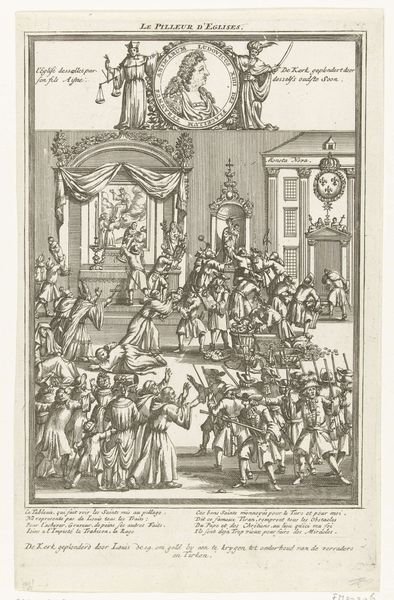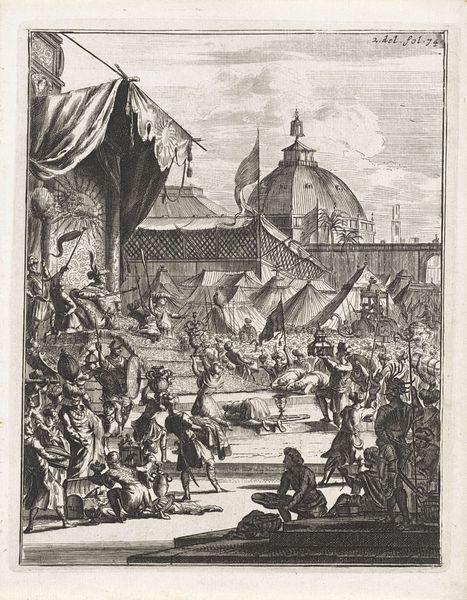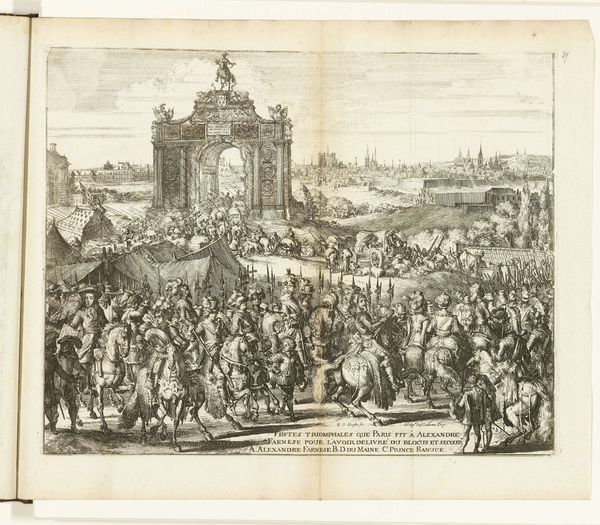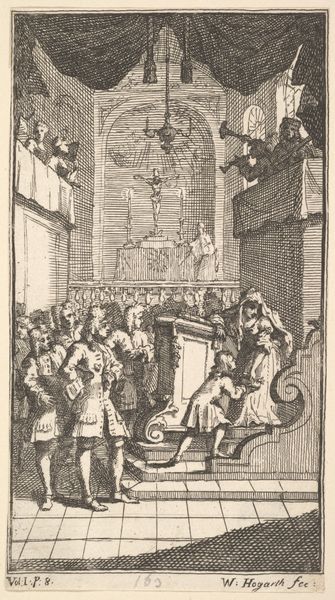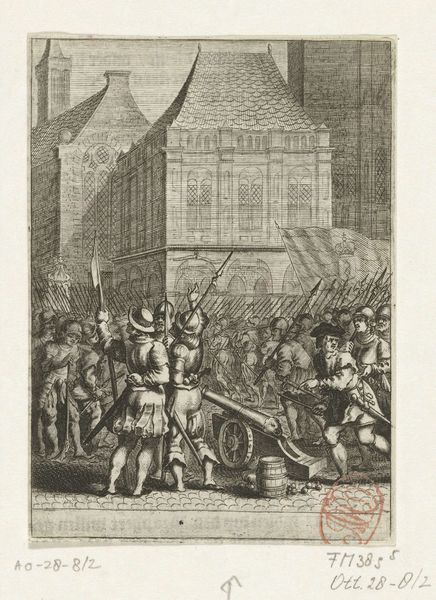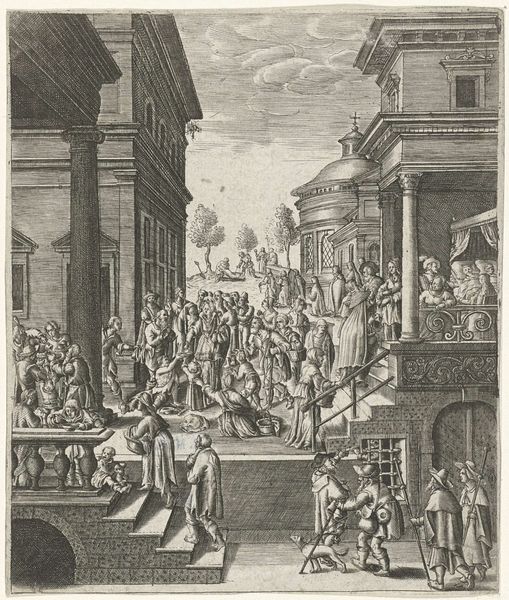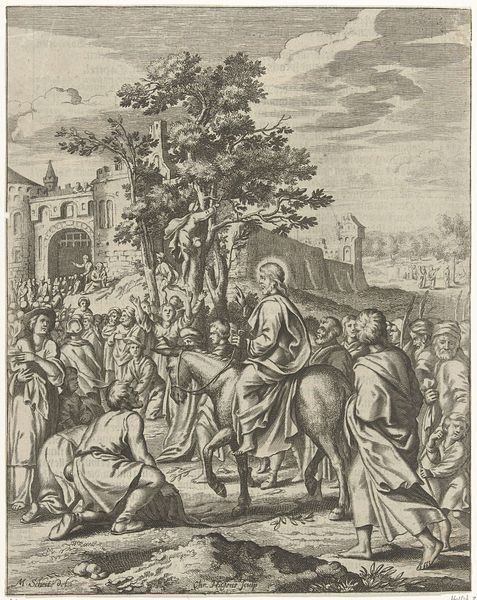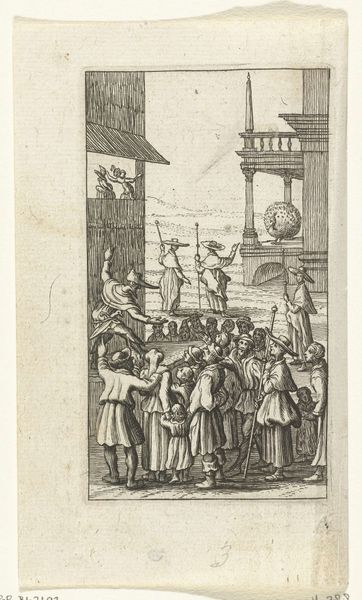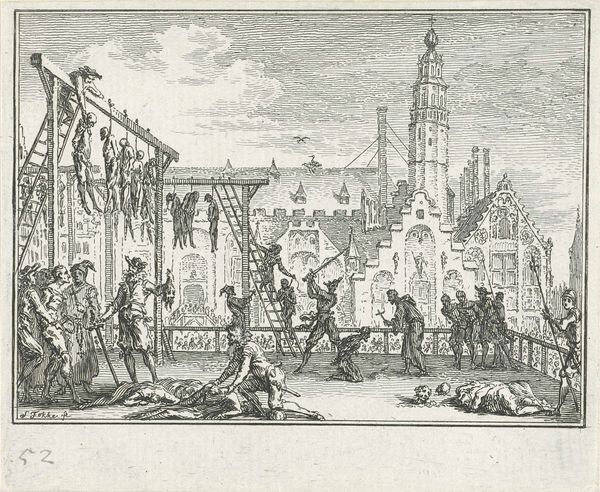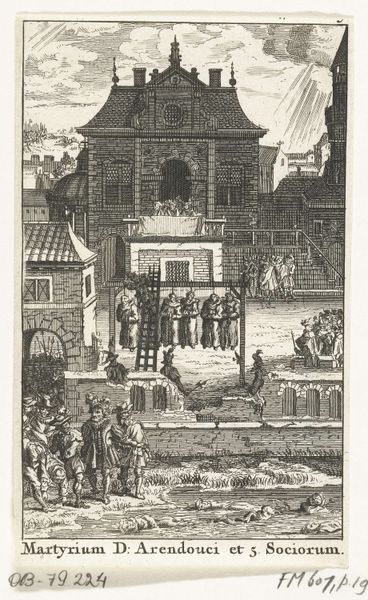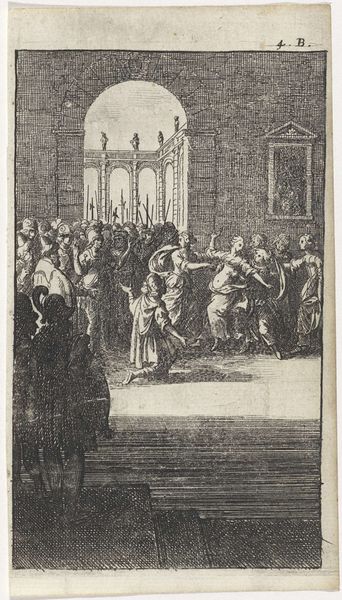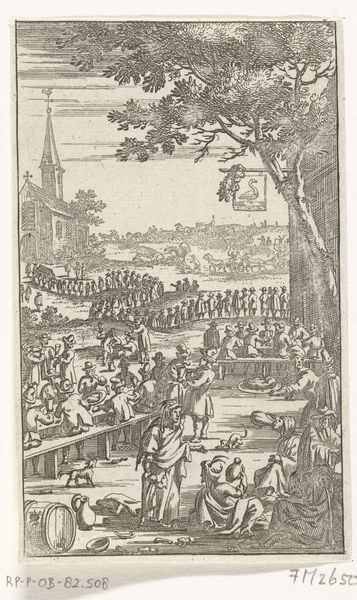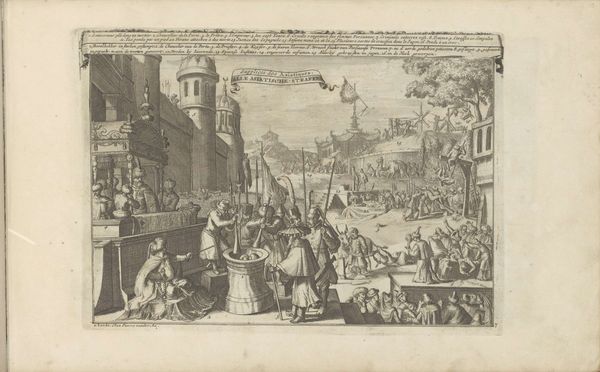
print, engraving
#
narrative-art
#
baroque
# print
#
history-painting
#
engraving
Dimensions: height 118 mm, width 65 mm
Copyright: Rijks Museum: Open Domain
Abraham Dircksz. Santvoort created this print titled 'Pompée verbrandt correspondentie', which translates to 'Pompey burns correspondence', in the Netherlands sometime between 1634 and 1669. It depicts a scene from Pierre Corneille's play "Sertorius," which dramatizes the life of the Roman general. The print highlights the play's themes of power, loyalty, and political intrigue. In this scene, Pompey dramatically burns letters to symbolize his commitment to Rome and his rejection of any potential conspiracy. The burning of correspondence is a visual metaphor for severing ties with potential enemies and consolidating power. Santvoort's work reflects the Dutch Republic's fascination with classical history and theater. The detailed architectural background and the crowd emphasize the public nature of Pompey's act. To fully understand this work, research into the history of Dutch theater and the political climate of the 17th century is essential. The print reminds us that art is often a product of its time, reflecting and commenting on the social and political realities of its era.
Comments
No comments
Be the first to comment and join the conversation on the ultimate creative platform.
